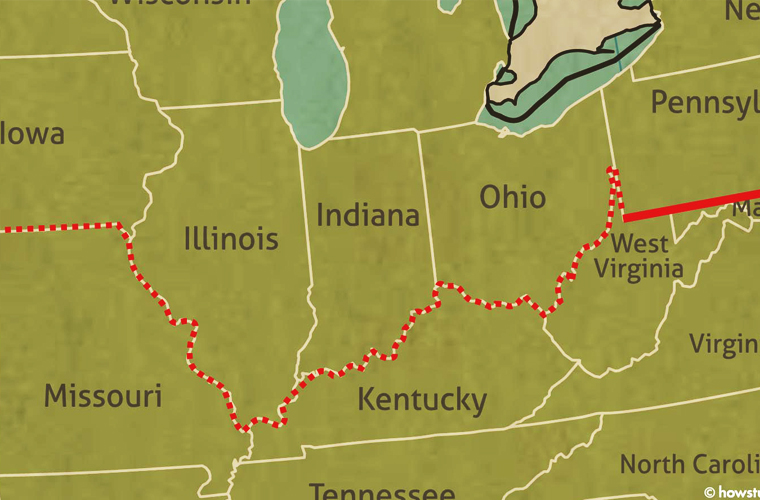The Mason-Dixon Line holds a significant place in American history as a boundary that not only separated states but also represented the divide between the North and the South during a tumultuous period. This geographical demarcation, which stretches approximately 230 miles, is named after the surveyors Charles Mason and Jeremiah Dixon, who were responsible for its creation in the 1760s. This article aims to explore the historical context, significance, and lasting impact of the Mason-Dixon Line.
Historical Context
The need for a demarcation line arose from a border dispute between the colonies of Maryland and Pennsylvania in the mid-18th century. Both colonies claimed the same land, leading to tensions and potential conflicts. To resolve this issue, the two colonies agreed to hire surveyors to establish a clear boundary line. Charles Mason, an English astronomer, and Jeremiah Dixon, an English surveyor, were selected for this task.
Surveying and Creation
Mason and Dixon embarked on their surveying journey in 1763, starting from the southernmost point of Philadelphia. Over the course of several years, they meticulously measured and marked the boundary line, using astronomical observations and sophisticated surveying techniques. The line they established eventually became known as the Mason-Dixon Line.
Significance
The Mason-Dixon Line not only resolved the border dispute between Maryland and Pennsylvania but also became an important symbol of division during a crucial period in American history. The line came to represent the divide between the Northern and Southern states, both culturally and politically. It played a pivotal role in shaping the debate over slavery and ultimately contributed to the outbreak of the American Civil War.
Impact on Slavery
The Mason-Dixon Line became synonymous with the division between free states and slave states. While it did not serve as a legal boundary for slavery, it effectively represented the cultural and ideological differences between the North and the South. The line demarcated the border between states that allowed slavery and those that did not, thus highlighting the growing tensions surrounding this contentious issue.
Civil War and Beyond
The significance of the Mason-Dixon Line reached its peak during the American Civil War (1861-1865). The line became a symbolic reference point for both sides of the conflict. The Union forces, fighting for the abolition of slavery, viewed the line as a marker of progress and freedom. On the other hand, Confederate forces saw it as a reminder of their cultural heritage and their fight to preserve their way of life.
Even after the Civil War ended, the Mason-Dixon Line continued to hold significance in American society. It became a cultural reference point for understanding regional differences and played a role in shaping popular perceptions of the North-South divide.
The Mason-Dixon Line stands as a testament to both the historical context in which it was created and its lasting impact on American society. From resolving a border dispute to becoming a symbol of division during one of the nation’s most challenging periods, this geographical boundary holds a unique place in history. Understanding its significance allows us to appreciate the complexities of American identity and the ongoing pursuit of unity amidst diversity.

